In This Issue
- Net Neutrality in SOTU
- DCIA’s IoT Marathon
- VZ IoT & Telematics
- Report from the CEO
- Connected Cars & 5G
- 10 Top CES Themes
- US Giant Buys IL Tech
- Monetize the Machine
- 3 Ways to IoT Invest
- Blockchain Key to IoT
- IIoT Economic Growth
- BitTorrent and Studio
- DDN Selected TOP 500
- Decision Engineering
- IoT Robots Take Over
- When IoT Will Arrive
- Coming DCIA Events
Net Neutrality Push Gets Mention in SOTU
Excerpted from The Hill Report by Mario Trujillo
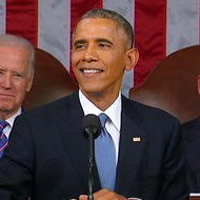 President Barack Obama renewed his call for strong Net Neutrality rules during his State of the Union (SOTU)address Tuesday night.
President Barack Obama renewed his call for strong Net Neutrality rules during his State of the Union (SOTU)address Tuesday night.
President Obama’s vow to protect a “free and open Internet” came while also stressing the importance of increased high-speed Internet access around the country.
“I intend to protect a free and open Internet, extend its reach to every classroom, and every community, and help folks build the fastest networks, so that the next generation of digital innovators and entrepreneurs have the platform to keep reshaping our world,” Obama said to applause.
During his agenda-setting speech, the President did not get into the details of his call for strong Net Neutrality rules — also known as “open Internet” rules.
But last November, he made detailed recommendations, calling on the Federal Communications Commission (FCC) to reclassify broadband Internet in a manner similar to a public utility.
The President first urged the FCC to make the change in a YouTube video last November. He and other advocates have said the authority is the only way to enforce rules that would limit Internet service providers (ISPs) from blocking or slowing traffic to any website, while also banning companies from negotiating deals for faster service in exchange for a price. Read more…
DCIA’s IoT Marathon Premieres Next Week
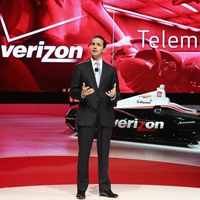 Post-production of the DCIA’s Internet of Things (IoT) Marathon is well underway with the goal of completing all aspects of the process in time for the major industry webcast to makes its debut on February 1st.
Post-production of the DCIA’s Internet of Things (IoT) Marathon is well underway with the goal of completing all aspects of the process in time for the major industry webcast to makes its debut on February 1st.
The DCIA’s IoT Marathon will cover five vertical categories — smart objects for fitness and healthcare; programmable homes and energy management; media entertainment and social networking solutions; geolocation services and vehicular automation; and retail, public, space, and manufacturing environments; as well as an exploration of key hurdles to be overcome for IoT to reach its full potential — power consumption, cybersecurity, and interoperability.
Here’s a sneak preview of one of the segments from the geolocation services and vehicular automation section of the webcast: Verizon Telematics Never Stops Working for You featuring Verizon Telematics’ VP of Advanced Strategy Tom Taylor.
During the 2015 International CES, IoT demonstrations and interviews were recorded daily in the Distributed Computing Industry Association’s (DCIA) HD-video production studio at Sands Expo Center while DCIA remote crews captured additional perspectives in meeting rooms, hospitality suites, and exhibit booths throughout CES.
DCIA’s Cloud Evangelist Michael Elliott served as principal on-camera host.
Next week’s DCINFO will include details of where you can view the entire webcast.
Verizon’s 2014: $585 Million in IoT & Telematics Sales
Excerpted from ZDNet Report by Larry Dignan
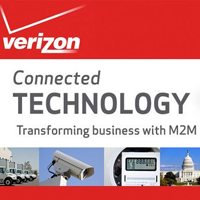 Verizon’s fourth quarter results were in line with earnings expectations and the company highlighted how machine-to-machine (M2M) and telematics revenue is beginning to scale.
Verizon’s fourth quarter results were in line with earnings expectations and the company highlighted how machine-to-machine (M2M) and telematics revenue is beginning to scale.
The company reported a fourth quarter net loss of 54 cents a share due to charges related to pensions, severance, and retirement of debt. Adjusted earnings for the fourth quarter were 71 cents a share on revenue of $33.2 billion, up nearly 7 percent from a year ago. Earnings were in line with expectations and revenue was a bit ahead.
For 2014, Verizon reported net income of $2.42 a share on revenue of $127.1 billion.
In many respects, Verizon’s quarter was standard issue. Verizon added a bevy of retail post-paid customer additions and saw churn creep-up. That latter point may indicate that competition from the likes of T-Mobile is having a modest impact.
As for the outlook, Verizon projected that it will grow revenue at a 4 percent clip with adjusted earnings on par with 2014 levels.
High level metrics include: 2.1 million retail connections including 672,000 postpaid phones were added in the fourth quarter; and churn was 1.14 percent in the fourth quarter, up 18 basis points from a year ago. Read more…
Report from CEO Marty Lafferty
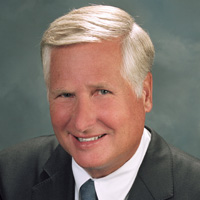 The Digital Due Process (DDP) coalition, in which the Distributed Computing Industry Association (DCIA)participates, sent an urgent message to the US Congress this week regarding timely passage of a much-needed update to the 1986 Electronic Communications Privacy Act (ECPA).
The Digital Due Process (DDP) coalition, in which the Distributed Computing Industry Association (DCIA)participates, sent an urgent message to the US Congress this week regarding timely passage of a much-needed update to the 1986 Electronic Communications Privacy Act (ECPA).
Here’s the text of the letter to Senate Judiciary Committee Chairman Charles Grassley (R-IA) and Ranking Member Patrick Leahy (D-VT); a similar letter was delivered to corresponding House of Representatives leaders.
“We, the undersigned companies and organizations, are writing to urge speedy consideration of Sen. Leahy’s and Sen. Lee’s ECPA Amendments Act that we expect will be introduced in the coming weeks.
The bill would update the Electronic Communications Privacy Act (ECPA) to provide stronger protection to sensitive personal and proprietary communications stored in ‘the cloud.’
The legislation was considered and adopted by a voice vote in the Committee in the 113th Congress.
ECPA, which sets standards for government access to private communications, is critically important to businesses, government investigators and ordinary citizens.
Though the law was forward- looking when enacted in 1986, technology has advanced dramatically and ECPA has been outpaced.
Courts have issued inconsistent interpretations of the law, creating uncertainty for service providers, for law enforcement agencies, and for the hundreds of millions of Americans who use the Internet in their personal and professional lives.
Moreover, the Sixth Circuit Court of Appeals in US v. Warshak has held that a provision of ECPA allowing the government to obtain a person’s email without a warrant is unconstitutional.
The ECPA Amendments Act would update ECPA in one key respect, making it clear that, except in emergencies or under other existing exceptions, the government must obtain a warrant in order to compel a service provider to disclose the content of emails, texts or other private material stored by the service provider on behalf of its users.
This standard would provide greater privacy protections and create a more level playing field for technology. It would cure the constitutional defect identified by the Sixth Circuit.
It would allow law enforcement officials to obtain electronic communications in all appropriate cases while protecting Americans’ constitutional rights. Notably, the Department of Justice and FBI already follow the warrant- for- content rule.
It would provide certainty for American businesses developing innovative new services and competing in a global marketplace.
It would implement a core principle supported by Digital Due Process, a broad coalition of companies, privacy groups, think tanks, academics and other groups.
This legislation has seemingly been held up by only one issue — an effort to allow civil regulators to demand, without a warrant, the content of customer documents and communications directly from third party service providers.
This should not be permitted. Such warrantless access would expand government power; government regulators currently cannot compel service providers to disclose their customers’ communications.
It would prejudice the innovative services that all stakeholders support, and would create one procedure for data stored locally and a different one for data stored in the cloud.
Because of all its benefits, there is an extraordinary consensus around ECPA reform — one unmatched by any other technology and privacy issue. Successful passage of ECPA reform sends a powerful message — Congress can act swiftly on crucial, widely supported, bipartisan legislation.
Failure to enact reform sends an equally powerful message — that privacy protections are lacking in law enforcement access to user information and that constitutional values are imperiled in a digital world.
For all these reasons, we strongly urge all members of the Senate Judiciary Committee to support the ECPA Amendments Act.”
Among the more than sixty co-signers are distributed computing industry leaders Adobe, Amazon, AOL, Apple, Cisco, Dropbox, eBay,Foursquare, Google, Hewlett- Packard, LinkedIn, NetChoice, Oracle, ServInt, Snapchat, Sonic, Tumblr, Twitter, and Yahoo.
Contact me this week to learn what you can do to help. Share wisely, and take care.
Connected Cars Could Drive the Need for 5G Technologies
Excerpted from TelecomTV Report by Guy Daniels
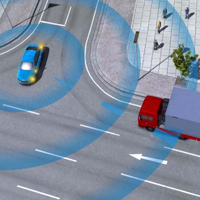 It’s not just the increasing use of smart devices that is prompting the telecom industry to pick up the pace on research for the next generation of wireless technology; 5G is also being developed to support a wide range of M2M and IoT applications. Among these are services and applications that will enable truly connected cars and driverless vehicles.
It’s not just the increasing use of smart devices that is prompting the telecom industry to pick up the pace on research for the next generation of wireless technology; 5G is also being developed to support a wide range of M2M and IoT applications. Among these are services and applications that will enable truly connected cars and driverless vehicles.
“Industry awareness about the importance of vehicle-to-vehicle (V2V) and vehicle-to-infrastructure (V2I) is clearly gaining momentum, largely driven by its expected key role in enabling driverless vehicles,” said Dominique Bonte, VP and Practice Director at ABI Research.
“It has prompted car OEMs such as GM to announce a 2017 Cadillac CTS model equipped with V2V technology from Delphi, in conjunction with the Super Cruise ADAS solution. Other OEMs such as Toyota and Audi are also committed to V2V.”
But while early implementations of V2V-equipped vehicles will start appearing in the next few years, partially driven by Europe’s Car-to-Car Communications Consortium (C2C-CC), Bonte says that wide-scale deployments should not be expected before 2020.
LTE has already been trialled by manufacturers such as Volvo for emulating non-safety-critical V2V applications, such as exchanging non-time-critical information including hyper-local weather, road conditions, and traffic data directly between vehicles. Read more…
10 CES Themes Likely to Resonate for Some Time
Excerpted from eWeek Report by Chris Preimesberger
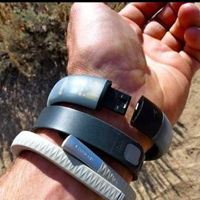 There’s no question about the high-level theme for 2015 CES in Las Vegas, NV, which ended on January 9th: It was about connecting a plethora of new devices to the Internet of things (IoT).
There’s no question about the high-level theme for 2015 CES in Las Vegas, NV, which ended on January 9th: It was about connecting a plethora of new devices to the Internet of things (IoT).
To be more specific, the emphasis is on connecting consumers of all ages and locales to the IoT via wearables, transportation, home utility and entertainment systems, and handheld devices. CES, however, has moved well beyond its original focus solely on “consumer” products and has become a leading showplace for introducing a wide range of technology that also can be used in business.
CES has become not only the place to find the latest computer, mobile entertainment, and even business technology, it’s also a great place to find cool ideas and products.
After the 170,000 or so attendees left town last weekend, there remained several key high-level data points that are well worth revisiting. The following slides highlight some of what eWEEK saw as lasting takeaways from CES for enterprises and consumers.
Biometrics certainly isn’t new, but like all IT, it has continued to evolve over the years and now apparently has arrived as a feature that ostensibly will be included on most connected devices we’ll be owning in the future. Read more…
US Giant Buys Israeli Company for IoT Tech
Excerpted from Times of Israel Report by David Shamah
 Red Bend, an Israeli company responsible for nearly three-quarters of the wireless software updates for cell phones around the world, is being acquired by entertainment technology giant Harman, both companies said Thursday.
Red Bend, an Israeli company responsible for nearly three-quarters of the wireless software updates for cell phones around the world, is being acquired by entertainment technology giant Harman, both companies said Thursday.
The deal is valued at $170 million, including approximately $99 million in stock and $71 million in cash.
Harman said that it was buying Red Bend in order to use its over-the-air (OTA) updating technology “to meet the rising demands of the connected car.”
“By bringing Red Bend under the Harman umbrella and driving broad industry usage, Harman’s combined technology portfolio will seamlessly enable safe, secure OTA updates for a variety of on-board Harman and non-Harman automotive systems — whether embedded or downloaded — speeding the pace of innovation to automakers and the industry.”
If Harman was looking for remote update technology, it has come to the right place. Red Bend, established in 1999, has become the “go to” provider of firmware over-the-air (FOTA) updates for phones and devices made by manufacturers such as Kyocera, LG Electronics, Motorola, Sharp, Sony, Ericsson, and ZTE, among many others.
Red Bend’s technology is used by more than 80 mobile device manufacturers, mobile operators, and semiconductor vendors, and is installed on more than 2 billion devices. Read more…
Monetizing the Machine: IoT Business Models
Excerpted from Capgemini Consulting Report by Jerome Buvat
 Everything about the Internet of Things (IoT) is big. It promises a world where “everything is connected” and where billions of interconnected devices will be monitoring everything from the factories that produce our goods to the oceans that surround us.
Everything about the Internet of Things (IoT) is big. It promises a world where “everything is connected” and where billions of interconnected devices will be monitoring everything from the factories that produce our goods to the oceans that surround us.
And the potential revenue prize offered by the IoT is of similar scale. Cisco recently estimated that it has the potential to generate about $19 trillion of value over the coming years.
Given the size of this prize, it is perhaps not surprising that organizations are making it a priority. In a recent surveyof senior business leaders around the globe, 96% said that their companies would be using IoT in some way within the next 3 years, while 68% said their companies are already investing budgets in IoT.
However, there is a gap between the promise of IoT and the delivery of hard results. Most organizations are yet to derive significant commercial value from IoT.
Our recent research shows that 70% of organizations do not generate service revenues from their IoT solutions. In short, beyond the exciting promise of the IoT, there’s the simple question of how to make money from it. While these are early days in the IoT’s evolution, we see four emerging business models. Read more…
3 Ways to Invest in the Internet of Things
Excerpted from the Motley Fool Report by Rex Moore and Simon Erickson
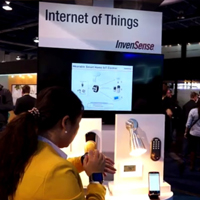 The Internet of Things (IoT) might seem infinitely complex. Described by many as “a system of systems,” there are already estimates that 25 billion devices will be connected by the end of this year.
The Internet of Things (IoT) might seem infinitely complex. Described by many as “a system of systems,” there are already estimates that 25 billion devices will be connected by the end of this year.
To help guide investors on how to play this megatrend, Rule Breakers analyst Simon Erickson breaks the IoT down into three layers:
“Picks-and-shovels” hardware providers, such as InvenSense or NXP Semiconductors provide the backbone of this IoT. These are the sensors, chips, and devices that will collect data from all over the world.
Developers will also create software applications for consumer-facing companies to improve the user experience of their products. Under Armour could help you track your fitness results, or Middleby could automatically program instructions for its ovens to cook certain dishes.
Lastly, infrastructure system providers are responsible for aggregating and interpreting all of this data. Google will emerge as an undisputed winner, but smaller players such as Splunk will have huge opportunities as well.
One bleeding-edge technology is about to put the World-Wide-Web to bed. It could make early investors wildly rich. Experts are calling it the single largest business opportunity in the history of capitalism. The Economist is calling it “transformative”… But you’ll probably just call it “how I made my millions.” Read more…
IBM & Samsung: Blockchain Might Be Key to IoT
Excerpted from ZDNet Report by Colin Barker
 If the Internet of Things (IoT) is to be the quantum leap in computing that many people are predicting, then to start with, it needs to prove that it is feasible to link-up billions of devices on networks around the world – without running into cost and privacy concerns.
If the Internet of Things (IoT) is to be the quantum leap in computing that many people are predicting, then to start with, it needs to prove that it is feasible to link-up billions of devices on networks around the world – without running into cost and privacy concerns.
One development that could make this possible is the “blockchain” system pioneered by Bitcoin.
IBM and Samsung are working together to build a proof-of-concept system for the next generation of the IoT. This will be based on IBM’s Autonomous Decentralized Peer-to-Peer (P2P) Telemetry [ADEPT] concept that uses theBitTorrent P2P file sharing protocol, the Bitcoin cryptocurrency, Ethereium, and the P2P communication protocol Rehash.
The IoT will consist primarily of machines talking to one another, with computer-connected humans observing, analyzing and acting upon the resulting ‘Big Data’ explosion. Here’s how the next Internet revolution is shaping up.
According to IBM, the aim is for the technology to serve as ledgers, or record-keepers, for many billions of transactions which the IoT will generate.
In a recent report, IBM argues there are a number of issues that need to be dealt with if the IoT is to succeed. These include broken business models, lack of privacy, high cost, lack of functional value, and inability to withstand change. Read more…
Industrial Internet of Things Will Boost Economic Growth
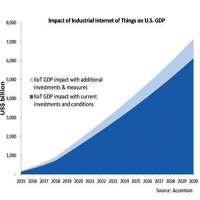 At a time of uncertain economic growth, the Industrial Internet of Things (IIoT) could contribute $14.2 trillion to world output by 2030, according to new research by Accenture. But these potential gains are at risk because neither companies nor governments are taking sufficient actions to put in place the conditions necessary for the wide adoption of new digital technologies.
At a time of uncertain economic growth, the Industrial Internet of Things (IIoT) could contribute $14.2 trillion to world output by 2030, according to new research by Accenture. But these potential gains are at risk because neither companies nor governments are taking sufficient actions to put in place the conditions necessary for the wide adoption of new digital technologies.
“The IIoT has the capacity to significantly boost the productivity and competitiveness of industrial economies, but poor supporting conditions — especially the lack of digital literacy — will hold many countries back,” according to Accenture.
The IIoT, which enables new digital services and business models based on intelligent connected devices and machines, is expected to particularly boost growth in mature markets, according to the report titled ‘Winning with the Industrial Internet of Things.’
By 2030, capital investments in the IIoT and the productivity gains that should follow are expected to add $6.1 trillion to the United States’ cumulative GDP.
If the US were to invest 50 percent more in IIoT technologies and improve enabling factors, such as its skills and broadband networks, the gain could reach $7.1 trillion by 2030, raising its GDP 2.3 percent higher in 2030 than trend projections. Read more…
BitTorrent Bundle’s First Partnership with Major Film Studio
Excerpted from ITProPortal Report by Barclay Ballard
 BitTorrent has announced its first partnership with a major film studio, as it continues to market peer-to-peer (P2P) networks for sharing content.
BitTorrent has announced its first partnership with a major film studio, as it continues to market peer-to-peer (P2P) networks for sharing content.
“Red Army,” a documentary detailing the rise and fall of the Soviet Union hockey team, is out in theaters today, but behind-the-scenes footage and archival images are available via a BitTorrent Bundle now.
In order to bring the extra features to consumers, BitTorrent has worked together with the film’s distributor Sony Pictures Classics. Tom Bernard, Co-President of the movie studio, was full of praise for “Red Army.”
“Director Gabe Polsky has made a dramatic, entertaining movie about historic heroes on the ice,” he said. “‘Red Army’ has the same level of depth and freshness as ‘Inside Job’ and ‘Fog of War.'”
Torrenting has largely been associated with copyright infringement and the unauthorized distribution of commercial content, but a number of licensed releases, particularly via BitTorrent Bundle, have begun to change this perception.
In September last year, Radiohead frontman Thom Yorke released his second solo album via BitTorrent, which has gone on to amass more than 4 million downloads. As is the case with “Red Army,” BitTorrent Bundles usually offer a small number of files for free; with subsequent downloads behind a paygate. Read more…
DataDirect Networks Dominates TOP 500 Global Supercomputing List
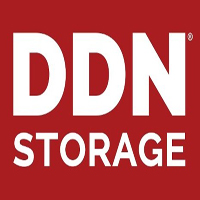
For the sixth consecutive year, DataDirect Networks (DDN) continues its proven leadership of the TOP 500 Global Supercomputer rankings with more than two-thirds of identifiable sites among the world’s 500 fastest computers relying on DDN storage infrastructure solutions, according to the most recent TOP 500 rankings list.
As the premier global list that ranks supercomputers by performance, the TOP 500 list illustrates the computer power of massively scalable computer systems being used within high performance computing (HPC) markets.
DDN’s founders, Alex Bouzari and Paul Bloch, have demonstrated the capability to deliver leadership within the TOP 500 year after year. Their commitment is reflected in the company’s ability to consistently out-innovate its competition, and to meet and exceed the technology requirements for the most data-intensive workflows in the world.
Increasingly, many of these workflows depend on site-wide file systems to help address peak and mixed I/O demands on the storage infrastructure of HPC environments according to a recent DDN end-user survey. With major HPC and Big Data deployments worldwide, DDN is meeting the needs of HPC storage users with massively scalable centralized storage that serves multiple clusters, lowers TCO and simplifies management and administration.
New DDN deployments including KTH — Sweden’s Royal Institute of Technology, HLRS, and Louisiana Optical Network Initiative join the extensive list of existing TOP 500 DDN customers.
What’s Next after Big Data? It’s Decision Engineering
Excerpted from Economic Times Report by Apeksha Kaushik
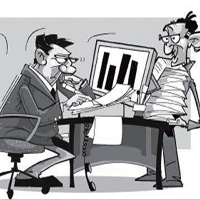 To take power out of Big Data and use it to make better engineered Business Decisions will be the next big thing in 2015… And there will be plenty of high paying jobs too!
To take power out of Big Data and use it to make better engineered Business Decisions will be the next big thing in 2015… And there will be plenty of high paying jobs too!
Big Data is currently at the peak of the hype cycle. A lot is being talked, written, researched, and reported around it.
Estimates are that nearly 4 million new jobs will be created globally in 2015, within Big Data and related fields. The increasing volume of information captured by corporations, digital and social media, and the Internet of Things (IoT) is fueling growth in this industry exponentially.
However, the hype around Big Data is not without its fair share of detractors. The criticism is that while many companies have invested heavily in establishing Big Data infrastructure, they have not been able to utilize it for making business decisions.
According to Titir Pal, Director of Products and Solutions, Absolutdata Analytics, “A shift needs to be made from Big Data technology and infrastructure setting-up, to enabling managers to engineer better decisions through data. We define this shift as Decision Engineering – the way to take power out of data and use it to make better engineered business decisions is the next big thing in 2015.” Read more…
Will Internet of Things Robots Take Over Earth by 2020?
Excerpted from Forbes Report by Adrian Bridgwater
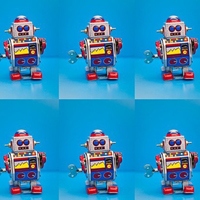 Despite the headlines and all the pizzazz, hardcore software application developers haven’t been quite as frenetically fueled by the arrival of the so-called Internet of Things (IoT) as the publicity arms of the technology industry itself. This is not a negative, this is a positive — and this is because we already had a name for these technologies dating back as the start of the 1960s, and it was called embedded computing.
Despite the headlines and all the pizzazz, hardcore software application developers haven’t been quite as frenetically fueled by the arrival of the so-called Internet of Things (IoT) as the publicity arms of the technology industry itself. This is not a negative, this is a positive — and this is because we already had a name for these technologies dating back as the start of the 1960s, and it was called embedded computing.
Embedded systems started off inside military missile systems, but soon progressed (somewhat less aggressively) to the implementation of embedded processors inside calculators for the consumer market. In the modern (post 1980s) age of computing, we started to find variants on these same kinds of embedded motherboards and processors inside everything from airport “kiosk” screens and cars — and then we finally accepted that almost everything had the potential to have a computer in it.
But these devices were not connected, until the web arrived.
With the arrival of the web in the nineties we had the chance to rename embedded systems something along the lines of “embedded connected Internet computing systems”, but we chose not to.
Largely because embedded circuitry still has its place to play in a disconnected (or at least only occasionally connected) world. Read more…
IoT Will Have Arrived When You Don’t Notice It’s There
Excerpted from Entrepreneur Report by Howdy Pierce
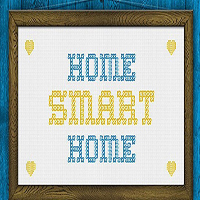 There are a lot of breathless predictions about the future of the Internet of Things, or IoT.
There are a lot of breathless predictions about the future of the Internet of Things, or IoT.
According to the pundits, in the not-too-distant future we will live in smart homes and navigate our smart city streets to work in smart offices. All along the way, Big-Data-driven algorithms will synthesize information across disparate inputs to make our lives easier by automatically controlling all sorts of widgets.
According to industry-watchers, the IoT market has the potential to create an economic impact of $2.7 to $6.2 trillion annually by 2025. Sixty-one percent of executives agree companies that are slow to integrate the IoT will fall behind the competition, and 96 percent of executives expect their business to be using the IoT in some respect by 2016.
By 2022, a typical family home in a mature, affluent market could contain several hundred smart objects. That is, smart in the sense of gaining some level of sensing and intelligence combined with the ability to communicate wirelessly.
In many cases, this cloud-based information will itself be informed by telemetry from other low-power and inexpensive devices, creating a cross-vendor virtuous cycle. Think of the sprinkler system that doesn’t come-on in the morning because it knows it’s going to rain in two hours, and you start to get an idea of the potential impact the IoT can have. Read more…
Coming Events of Interest
State of the Net Conference — January 27th in Washington, DC. With unparalleled opportunities to network and engage on key Internet policy issues, this is the largest Internet policy conference in the US and is recognized for its balanced blend of private and public sector participants.
Digital Rochester IoT Event — January 29th in Rochester, NY. What is the Internet of Things (IoT)? This special seminar at the Rochester Museum & Science Center will address challenges to be faced in implementation and how data from the IoT can make marketing smarter.
Datacloud South East Asia — April 1st-2nd in Johor, Malaysia. Datacloud South East Asia will assess the energy, scalability, security, architecture, and software challenges confronting operators of data centers and enterprises engaged in or considering transitions to the cloud.
NAB Show — April 11th-16th in Las Vegas, NV. Popular and fresh attractions for 2015 include the Cloud Pavilion (CP) for asset management; Connected Media Live (CML), focusing on the consumer experience; the Drone Pavilion (DP), featuring a fully enclosed “flying cage” for demonstrations; and the New Media Expo (NMX).
Internet of Things Conference — April 15th-17th in San Diego, CA. The IoT Con will focus on how companies are using a variety of technologies, including ZigBee radios, Wi-Fi, and machine-to-machine (M2M)software, to connect things to the Internet, and how they are achieving real business benefits from doing so.
All That Matters — May 20th-23rd in Singapore. Packed with influencers, content creators, platforms and marketers, ATM drives business and global collaboration for decision makers in the entertainment, media, and marketing industries.
CES Asia — May 25th-27th in Shanghai, China. The success of the 2015 International CES builds strong momentum for CES Asia. With strong exhibitor demand for CEA’s inaugural event, the show will be curated with select qualifying companies permitted to exhibit.
Data Center and Cloud Awards — June 2nd in Monaco. Europe’s most prestigious awards for data center and cloud achievements will be announced at an evening ceremony prior to the opening of Europe’s ‘must-attend’ Datacloud Europe conference and exhibition.
Internet of Things World Forum (IoTWF) — October (2015 Dates TBD) in Dubai, UAE. IoTWF is an exclusive event that brings together the best and brightest thinkers, practitioners, and innovators from business, government, and academia to accelerate the market adoption of the Internet of Things.
